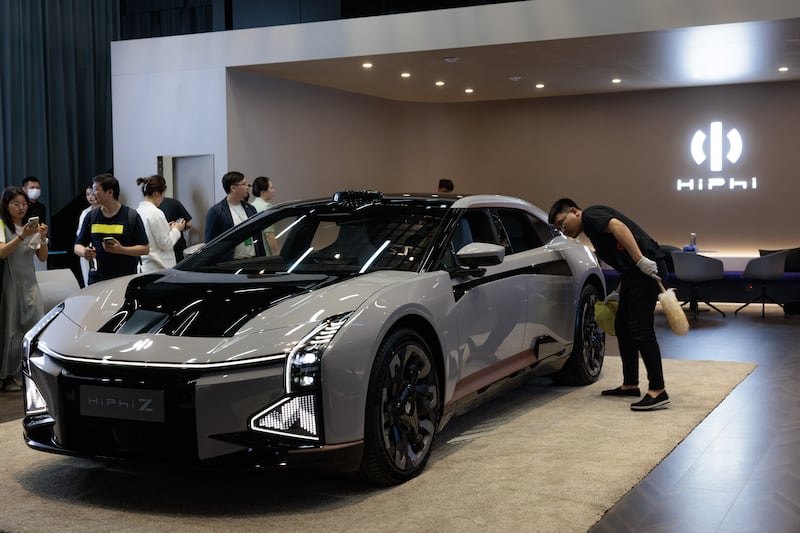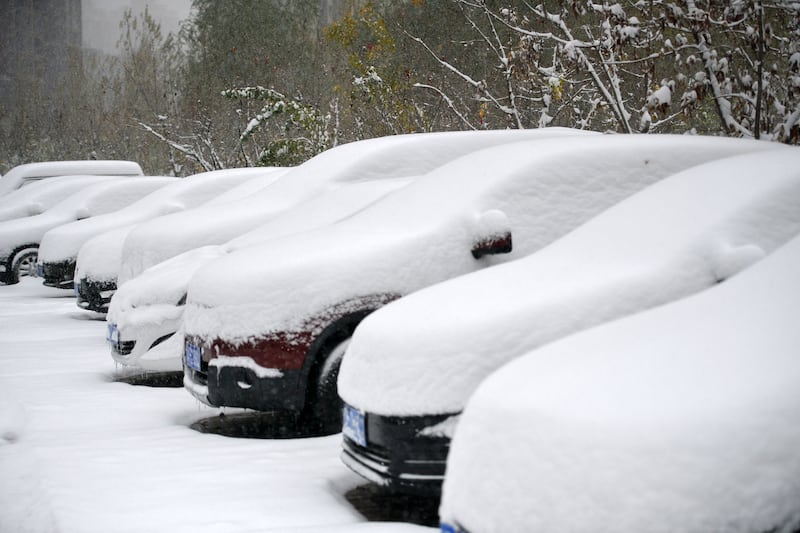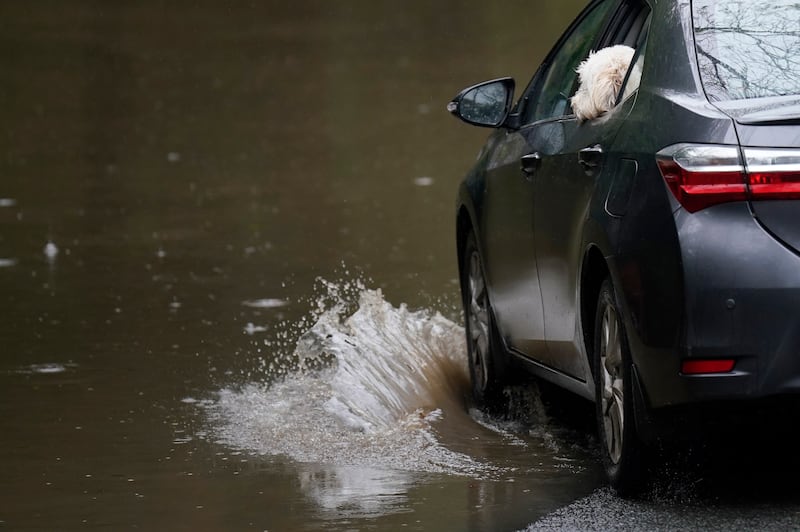Will my EV range by affected by the weather?
Yes, the weather does affect the range of electric vehicles. That’s as true of very hot weather as it is of very cold weather.
Cold weather is something of a double-whammy though – not only do lower temperatures affect the chemistry of EV batteries, you’re also more likely to use the heating, which is a further drain on the battery.
According to research by fleet management company Geotab, the optimum ambient temperature for an EV to maximise its range is 21 degrees. It’s warm enough that you won’t need the heat turned up, but equally cool enough that you probably won’t want to have the air-conditioning blasting at max.
Below that temperature, performance starts to tail-off and at the lowest point Geotab’s graph, -20 degrees, you could be looking at getting just 40 per cent of your car’s claimed range.
READ MORE
That’s not likely in Ireland. What about here?
For Irish drivers, temperatures will rarely drop below zero degrees, at which point the average reduction in range sees you able to get about 80 per cent of your usual range, which might be painful on a longer journey but probably not an issue for your daily driving.
What about when it heats up in the summer?
At higher temperatures, the reduction is less severe, and you’d have to be heading for more than 40 degrees to see range fall to 80 per cent. Some cars do perform better than others, however.
So which cars are best in the extremes?

A recent independent test in Norway, known as El Prix and carried out by the Norwegian Automobile Foundation (NAF), found that the best-performing model was the HiPhi Z, a Chinese car which is only just beginning to arrive in Europe. The Z’s WLTP claim is 555km on one charge, and NAF found that in temperatures of between -2 and -10 degrees, it would still provide 522km.
Hyundai’s Ioniq 6 (which is currently available in Ireland, unlike the HiPhi) also performed well, coming third overall in the test (behind another Chinese model that doesn’t come to Ireland for a while yet, the NIO ET5). That said, the Ioniq 6 still showed a significant drop from its claimed range, falling to 468km from the official 614km figure.
The Tesla Model 3 performed similarly, falling to 441km against a 629km claim, while the Kia EV9 managed the same distance, but against a 505km claim, only dropped 12.5 per cent of its range to the weather, compared to the Tesla’s 29.9 per cent.
[ Your EV questions answered: Do electric cars hold their value?Opens in new window ]
The NAF test is probably the best real-world cold weather EV range test, but the standard rule of thumb is that once the temperature is down into single figures, or below zero, then knock at least 25 per cent off the claimed range of your electric car.
Is there anything I can do to reduce the temperature impact?
If you are charging at home, use the car’s preconditioning system – which runs the heating or air conditioning while it’s plugged into the mains – to heat up or cool down the cabin before setting off.
It’s a lot more efficient to keep a cabin at a set temperature rather than starting from scratch as you drive. It’s also best to buy an EV with a heat-pump heating system, as this scavenges waste heat from the battery pack to run the climate control, making it more efficient overall.
And, if you’re getting chilly on a long drive, try using the heated seats and steering wheel (assuming they are fitted to your car) before turning up the fan, as these systems work at a lower voltage and don’t drain the main battery as much as heating up the entire cabin.
What happens to EVs in the snow?

The same thing that happens to every other car – it will slip and slide unless driven carefully. True, as we’ve seen above, the battery will suffer in terms of range, but beyond that, driving an EV on snow is like driving any other car – select a winter- or eco-driving mode, and go carefully.
Fit winter tyres if you can, as these are a far more important indicator of a car’s snow-and-ice performance than simply asking whether it’s electric or not. As always, if it’s going to be especially chilly out, make sure you leave extra space to the car in front while driving because your stopping distance will go up, and the weight of an EV definitely plays against it in that metric.
In some ways, however, EVs can actually be better in snow than conventional cars. That extra weight which EVs tend to carry can aid traction on slippery surfaces, while many models come with the option of two-motor, four-wheel drive variants. EVs can also transmit power to the tyres more carefully and precisely than a combustion engine.
Is there a risk of electrocution if I drive an EV into a flooded road?

No, this is a myth perpetuated by EV sceptics. It is true that in the case of a damaged battery, there could be a tiny risk, but it’s more likely that any water entering the battery would simply cause the car’s safety systems to shut it all down.
In fact, EVs deal with deep water so much better than a conventional petrol or diesel engine, simply because they don’t need any air. A diesel or petrol engine has to draw air in at the front, and pump exhaust out the back, and when driving through standing water that’s the risk – water getting either down the intake or up the exhaust and into the engine can cause catastrophic damage.
By contrast, an EV’s motors and battery are fully weather-sealed, so you can drive through standing water with relative impunity (taking the usual precautions of not going too fast and the water not being so deep that you actually start to float of course…).













